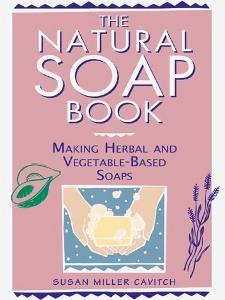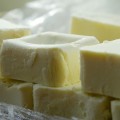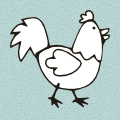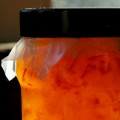Soap making book reviews: Soapmaking by Sarah Ade and The Natural Soap Book by Susan Miller Cavitch
Ahead of making soap for the first time a fortnight ago, I bought and read two soap making books – I thought it would be best to get familiar with the techniques before I started playing with burn-your-flesh lye.
The books I bought were:
- ‘Soapmaking’ by Sarah Ade, part of the New Holland Self-Sufficiency series, and,
- ‘The Natural Soap Book: Making Herbal and Vegetable-based Soaps’ by Susan Miller Cavitch
 Both came with glowing reviews on Amazon but, to be frank, neither book particularly did it for me. I spent a lot of time looking for what I thought would be the most suitable books but still, I may have had overly high expectations or completely wrong ones so I’ll start with some positives of both before I start with my criticisms.
Both came with glowing reviews on Amazon but, to be frank, neither book particularly did it for me. I spent a lot of time looking for what I thought would be the most suitable books but still, I may have had overly high expectations or completely wrong ones so I’ll start with some positives of both before I start with my criticisms.
Both are nice books to look at and easy to read. ‘The Natural Soap Book’ is particularly lovely – it’s printed in a lovely purple font on soft cream paper, with clear, relevant line illustrations. There is a lot of text in it – considerably more than ‘Soapmaking’ – but there is still enough “whitespace” to make it pleasant to read and not feel cluttered or dense.
Both books include pages on soap-making history & theory, useful information on the chemistry of soap making (saponification charts etc) and the characteristics of different oils/butters, and scents and other (natural) addictives. ‘The Natural Soap Book’ went a bit further, as you may expect from a more advanced book, but ‘Soapmaking’ provided a decent amount of information too.
But (and this is where the criticisms start) for all their talk about different soaps and oils/butters, the recipes seem lacking in variety. All but one recipe in each book contains olive oil, palm oil and coconut oil – not just in there a little bit, but the majority (fat) ingredients in every case. Now I know the authors are both experienced soap makers and I’m not so perhaps I’m wanting something that’s stupid, but I’d have liked different types of soap mentioned – a 100% olive oil recipe (since that was one of reasons I started looking at making soap), or some without palm oil or without coconut oil, or heck, without olive oil. It felt like there was a basic recipe that they always used (admittedly perhaps with good reason) and the only different thing was the essential oils or the odd bit of some special oil (‘Soapmaking’ was particularly guilty of this – they felt very much variations on a theme except for the liquid soap recipe in the “taking soap further” section).
While in the recipes section, both books had some quirky measurements – the recipes clearly worked out in imperial measurements and converted into metric for the book. ‘The Natural Soap Book’ held the quirky crown with one recipe calling for “469 7/10th grams of sodium hydroxide” and flipping randomly between imperial and metric in each recipe – but I’ve not met a US-published book yet that handles metric conversions well. But even ‘Soap Making’, which I presume was written for a British audience, still had the odd weird measurement (“187.5g of coconut oil” – that’s 6 1/2 oz) – which I felt forced me into using imperial, even though that always seems less accurate for precise measurements than grams.
(There was also an issue of quantities in ‘The Natural Soap Book’. Again, I’m possibly the wrong market for it – perhaps it’s geared at people making to sell soap/give it away – but each recipe makes about 40 115g/4oz fully cured bars — which would last John and I for a long, long time! Too much for us to experiment with different recipes/scents. ‘Soapmaking’ is much better for this – each recipe makes about 8 100g bars.)
 Away from the recipes, ‘Soapmaking’ had three other key downsides/flaws for me: 1) I knew it was a thin book but in my opinion, there was a lot of design padding – lots of unnecessary illustrations – reducing the amount of content even further. I know that’s the style of the series but I was paying for soap-making advice, not a picture of a cup of tea or a cross-section of a piece of fruit. 2) Something a reviewer on Amazon pointed out – Ade suggests adding water to the sodium hydroxide crystal rather than vice versa. Everyone else says to *always* add the crystals to the water for safety reasons. And 3) there was no trouble-shooting section. If it had been my only soap-making resource, I’d have had no idea what to do when my soap didn’t trace in a timely manner. ‘The Natural Soap Book’ has a troubleshooting table which is clear and informative.
Away from the recipes, ‘Soapmaking’ had three other key downsides/flaws for me: 1) I knew it was a thin book but in my opinion, there was a lot of design padding – lots of unnecessary illustrations – reducing the amount of content even further. I know that’s the style of the series but I was paying for soap-making advice, not a picture of a cup of tea or a cross-section of a piece of fruit. 2) Something a reviewer on Amazon pointed out – Ade suggests adding water to the sodium hydroxide crystal rather than vice versa. Everyone else says to *always* add the crystals to the water for safety reasons. And 3) there was no trouble-shooting section. If it had been my only soap-making resource, I’d have had no idea what to do when my soap didn’t trace in a timely manner. ‘The Natural Soap Book’ has a troubleshooting table which is clear and informative.
I think it was the lack of recipe variety that really killed my buzz with each book. The information about oils and the chemistry of stuff is interesting and will be useful, but as I mentioned earlier, we’re pretty utilitarian with soaps – we’re not after lots of different scents or textures, and we don’t want to spend a lot of money on expensive ingredients – so I felt that a lot of the recipes just weren’t relevant to me. As I said at the beginning of this article, I did spend a lot of time looking for books and these seemed the most applicable – but they still weren’t, so maybe I had unrealistic expectations out of line with every other wannabe soapmaker. I suspect I’ll keep ‘The Natural Soap Book’ but sell or pass on the other – it just doesn’t add anything at all.
If anyone has any suggestions for a soap making books that they think would be more relevant to me and my desires, please let me know!







Hi Louisa,
I have Ade’s book, as well as Melinda Coss’ Handmade Soap Book (ISBN 9781859740064).
I know what you mean about the recipe limitations in Ade’s book. I’ve found that the two I have compliment one another – where one is lacking the other fills in (Coss’ book for example has a trouble-shooting section, as well as two olive oil recipes).
Neither book is “perfect” I think, like you I expected more. That said – I think that the idea behind both is to give you the basic points of reference and then let you run wild with your imagination.
One thing that might be helpful in their defence is that quite alot of what I read a year or so ago about soap making put me off – it gave me the impression that it was difficult, dangerous, poisonous, and faffy – the nice thing about both books is that they put it in a context that says – yup, you need to be careful but its not going to blow up your house, or give you a fatal illness (yes I’m saying this tongue in cheek – grin). The point is – I found the books gave me the confidence to actually try making my own soap – and that in itself is a success.